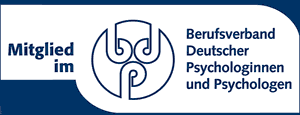CBT Psychotherapist
Egon Molineus is a licensed Psychotherapist with expertise in Behavioral Therapy. Egon first studied Psychology. During his main studies, he specialized in Clinical Psychology. After completing his psychology studies as a Diploma Psychologist, he completed a five-year theoretical and practical, state-regulated psychotherapy training with a focus on Behavioral Therapy at a state-recognized training institute in Munich, while working in psychiatric and psychotherapeutic facilities. After passing the state examination, he obtained state licensing to practice healing arts. He was then registered in the state medical register with the Association of Statutory Health Insurance Physicians Hamburgand became a member of the Psychotherapist Chamber Hamburg and the Psychotherapist Chamber Schleswig-Holstein.
CBT COGNITIVE BEHAVIORAL THERAPY in Hamburg Altona Ottensen & Hohwacht Plön Holstein
Cognitive behavioral therapy is one of the three scientifically recognized and health insurance-funded therapy procedures in Germany (guideline psychotherapy). It focuses on both external behavioral change and the modification of irrational thought patterns.
Our cognitions (attitudes, thoughts, beliefs) influence our feelings, our behavior, and our physical reactions – and vice versa. Therefore, it is important to consciously recognize faulty cognitions (so-called "cognitive distortions" according to Aaron Beck) (introspection) and correct them in a health-promoting way. Many of these distortions develop in childhood and adolescence and are reactivated in current difficult problem situations.
Behavioral therapy encompasses a broad spectrum of psychotherapeutic approaches. The focus is on helping people help themselves. It is solution-oriented: suffering is alleviated, capacity for action is expanded, and self-regulation is enabled.
The starting point is the analysis of the various triggering and maintaining conditions for your problems (behavioral analysis). Treatment strategies are individually adapted to the person's problems. Solution strategies are first practiced in the protected framework of the therapy session and then in real situations.
Feelings, thoughts, physical processes, and influences from the patient's extended environment are included. Goals and procedures are contractually established.
Behavioral therapy also includes changes in the social environment and interactions.
IS BEHAVIORAL THERAPY EFFECTIVE?
Behavioral therapy is effective for, among others:
- Affective disorders (depression, mania, bipolar disorder)
- Anxiety disorders (see e.g. social anxiety, panic)
- Obsessive-compulsive disorders
- Stress disorders (See trauma)
- Dissociative, conversion, somatoform disorders
- Eating disorders (anorexia, bulimia, binge eating)
- Other behavioral abnormalities with physical disorders
- Psychological and social factors in somatic diseases
- Personality disorders (see e.g. avoidant personality) and behavioral disorders
- Dependencies and substance abuse
- Schizophrenia and delusional disorders
Advisory Board Psychotherapy: Behavioral Therapy

Statement of the Scientific Advisory Board Psychotherapy according to § 11 PsychThG on Behavioral Therapy
Preliminary Remark Behavioral therapy and psychoanalytically-based procedures, as procedures recognized by the Federal Committee of Physicians and Health Insurance Funds, are not subject to critical examination by a state authority or to the expert opinion of the Scientific Advisory Board Psychotherapy according to § 11 PsychThG (WBP). According to the WBP's view, however, it is appropriate in the sense of principled equal treatment of all psychotherapeuticprocedures if the guideline procedures also take the opportunity to have the scientific nature of their method evaluated. The WBP offered its help to the corresponding professional societies for this purpose and made its criteria and procedural principles available. The documentation on behavioral therapy received in August 2002 was processed according to the same criteria as the other psychotherapeutic procedures treated by the Scientific Advisory Board with regard to scientific recognition. The result is the subject of the present statement.
- Basis of the Assessment On behalf of the German Society for Behavioral Therapy (DGVT) and the Working Group for Behavior Modification (AVM) with support from the German Medical Society for Behavioral Therapy(DÄVT), the German Society for Behavioral Medicine and Behavior Modification (DGVM), the German Professional Association for Behavioral Therapy (DVT) as well as the Clinical Psychology and PsychotherapySection of the German Society for Psychology (DGPs), Professor Dr. B. Kröner-Herwig as head of an expert group submitted an expertise for assessing the empirical evidence of the psychotherapy procedure behavioral therapywith a letter dated August 21, 2002. On July 9, 2003, Professor Kröner-Herwig submitted additional study material, which was also used for examination in the current statement of the Scientific Advisory Board.
In this expertise, according to the WBP criteria, the evidence situation for the individual application areas as defined by the Scientific Advisory Board is discussed. For the various disorder areas, there are no exhaustive literature searches regarding behavioral therapeutic studies in the relevant disorder areas, but only the required minimum of methodically acceptable studies, essentially RCT studies (randomized controlled trials) and meta-analyses.
The WBP should examine whether for behavioral therapy as a psychotherapeutic procedure - and if so, for which indication areas - the criteria for scientific recognition are met. For the present statement, application area 11 "Psychological and social factors in intellectual disability (F 7)" in adults as well as in children and adolescents the application area "Intellectual disability (F 7), organic brain disorders (F 0) and developmental disorders (F 80 to F 83 as well as F 88 and F 89)" remain unconsidered, as these areas raise special research questions that should be considered in a separate statement.
- Definition Behavioral therapy (VT) is based on empirical psychology. It encompasses disorder-specific and non-specific therapy procedures that strive for systematic improvement of the problems to be treated based on disorder and change knowledge. The therapeutic measures derived from disorder diagnostics and individual problem analysis target the predisposing, triggering and/or maintaining problem conditions. They pursue concrete and operationalized goals at various levels of behavior and experience (including modification of observable behavior, psychophysiological and cognitive-emotional processes as well as achieving a higher degree of adaptation, experienced self-control and problem-solving competence). The basic principles of behavioral therapy include problem orientation, goal orientation, action orientation, transparency, helping people help themselves, transcending the therapeutic setting as well as striving for empirically founded further development.
- Description of the Procedures Behavioral therapy encompasses a broad group of methods and techniques. For most mental disorders, special therapy programs have been developed and described in the form of therapy manuals, in which several of these techniques are often combined, including instrumental/operant learning in the form of self and external reinforcement, classical conditioning (such as in the form of aversive conditioning), model learning, habituation and extinction (such as in systematic desensitization and confrontation or exposure therapy), biofeedback, methods of self-control and self-management as well as various cognitive methods. Furthermore, behavioral therapy techniques from other areas are used, such as role-playing, imagination and relaxation procedures. Behavioral therapy is applied in individual, couple, family and group settings in both outpatient and partial/inpatient contexts.
- Indication Areas Behavioral therapy is considered indicated for all mental disorders, that is, for all application areas defined by the WBP in adults and in children and adolescents. Considerations and research efforts on adverse effects and contraindications should be further expanded in VT as well.
- Diagnostics Indication decisions and therapy planning in VT are based on classificatory disorder diagnostics according to ICD-10 or DSM-IV as well as case-specific problem analysis (problem structuring, condition analysis including behavioral analysis, goal analysis). Various test procedures and questionnaires are used for further clarification of symptoms and severity of the disorder as well as for recording therapy success and - especially in the context of research - for controlling the therapy process.
- Theory Behavioral therapy understands itself as an application of empirical-experimental psychology and its neighboring disciplines. In this respect, no closed and homogeneous theoretical foundation of behavioral therapycan be stated, since it fundamentally includes all methods that are empirically supported in its basic understanding. Classical behavioral therapy was based on classical learning theories and later on Bandura's social learning theory. With the cognitive turn, cognitive theories were increasingly used and cognitive interventions employed. In this respect, the term cognitive-behavioral therapy is often used today instead of behavioral therapy. Today, the theories and models for individual disorders are the essential foundation for the development and explanation of cognitive-behavioral therapeutic methods and programs.
- Effectiveness For adults, according to the criteria developed by the WBP for proving the effectiveness of therapy procedures for the various application areas of psychotherapy, this proof can be established for all 11 tested application areas except the area "Organic brain disorders." For this last-mentioned indication area, the evidence situation is judged as still insufficient. The Scientific Advisory Board has therefore established scientific recognition of behavioral therapy in adults for the following 10 application areas:
- Affective disorders (F 3)
- Anxiety disorders (F 40-42)
- Stress disorders (F 43)
- Dissociative, conversion and somatoform disorders (F 44, 45, 48)
- Eating disorders (F 50)
- Other behavioral abnormalities with physical disorders (F 5)
- Psychological and social factors in somatic diseases (F 54)
- Personality disorders and behavioral disorders (F 6)
- Dependencies and abuse (F 1, F 55)
- Schizophrenia and delusional disorders (F 2)
In summary, according to the criteria of the Scientific Advisory Board "Application areas of psychotherapy in adults" (Deutsches Ärzteblatt 2000, Issue 1-2, A-59 taking into account the amendment of September 16, 2002, Deutsches Ärzteblatt 2002, Issue 46, A-3132, PP-572), scientific recognition is to be established for these ten areas.
Compared to the adult area, the evidence situation for behavioral therapy in children and adolescents is less favorable. Some of the studies are based on small samples, so that the generalizability of results in individual application areas is limited. The Scientific Advisory Board establishes scientific recognition of behavioral therapy in children and adolescents for the following application areas:
- Affective disorders (F 30-39) and stress disorders (F 43)
- Anxiety disorders (F 40-42) and emotional disorders with onset in childhood and adolescence
- Dissociative, conversion and somatoform disorders (F 44-45) and other neurotic symptoms (F 48)
- Eating disorders (F 50) and other behavioral abnormalities with physical disorders (F 54)
- Behavioral disorders (F 90-92, F 94, F 98) with onset in childhood and adolescence and tic disorders (F 95)
- Autistic disorders (F 84)
- Personality disorders and behavioral disorders (F 60, 62, 68, 69), impulse control disorders (F 63), gender identity disorders and sexual disorders (F 64-66), dependency and abuse (F 1, F 55), schizophrenia and delusional disorders (F 20-F 29)
In summary, according to the criteria of the Scientific Advisory Board (Deutsches Ärzteblatt 2000, Issue 33, A-2190), scientific recognition is to be established for all seven tested areas in children and adolescents.
- Healthcare Relevance Behavioral therapy has been a mandatory benefit of statutory health insurance since 1987 and since then an essential component of care for the mentally ill. Healthcare services take place both on an outpatient and inpatient or day-patient basis. In treating children and adolescents, the psychosocial environment, essentially the parents, is included. In the outpatient area, between 40 and 50 percent of all treatments are carried out using this procedure; in the inpatient area, the proportion is similarly high.
- Education and Training For physicians, training in behavioral therapy is usually continuing education that either takes place within the framework of specialist physician training (e.g., in the field of psychiatry and psychotherapyor in the field of psychotherapeutic medicine and psychotherapy) or consists of acquiring an additional psychotherapeutic qualification. For psychological psychotherapists and child and adolescent psychotherapists, training in VT takes place at university institutions and at training facilities under independent sponsorship that are recognized according to the PsychThG.
- Final Notes The present statement did not consider application areas 11 "Adjustment disorders, psychological and social factors in intellectual disability" in adults and 8 "Intellectual disability (F 7), organic brain disorders (F 0) and developmental disorders (F 80-83 as well as F 88 and F 89)" in children and adolescents.
The Scientific Advisory Board Psychotherapy concludes that behavioral therapy in adults can be considered scientifically recognized in all tested application areas of psychotherapy except the area "Organic brain disorders." In children and adolescents, behavioral therapy can be considered scientifically recognized for all seven tested application areas.
Thus, the number of scientifically recognized application areas for both adults and children and adolescents is significantly above the number that the Scientific Advisory Board Psychotherapy considers necessary to recommend a procedure for in-depth training as a psychological psychotherapist according to the PsychThG.
Given the breadth of methods, procedures and techniques of behavioral therapy, psychotherapeutic training must not be limited to individual methods, techniques and application areas.
Cologne, December 29, 2003 Prof. Dr. Jürgen Markgraf (Chairman) Prof. Dr. Sven-Olaf Hoffmann (Deputy Chairman)
© Scientific Advisory Board Psychotherapy · last change August 13, 2007
Acceptance and Commitment Therapy
ACT
Acceptance and Commitment Therapy, abbreviated ACT, represents a significant milestone in the development of modern psychotherapeutic approaches. It combines classical behavioral therapeutic techniques with mindfulness- and acceptance-based strategies as well as interventions for value clarification. What particularly distinguishes ACT is its innovative approach to dealing with emotions: Instead of emotion suppression, it focuses on emotion acceptance and a positive reappraisal of negative feelings.
From the ACT perspective, various psychological processes contribute to the development of mental disorders. A central problem is the lack of separation between language or thinking and reality, which is called "cognitive fusion." Other important factors are experiential avoidance, the narrowing of thoughts through rumination and overvaluation of thought processes, the absence of values and valued actions, as well as a lack of inner commitment to oneself.
ACT makes a particularly important distinction between "clean" and "dirty" suffering. "Clean suffering" is understood as an unavoidable part of human existence - it consists of the unpleasant inner experiences that belong to a value-oriented life. "Dirty suffering," on the other hand, arises from attempts to avoid these unpleasant experiences. These avoidance strategies, whether through withdrawal, escape, numbing, or excessive safety behavior, not only lead to short-term or absent successes but often have significant negative impacts on life management.
The central goal of ACT is the development of psychological flexibility. This means living consciously in the present moment while simultaneously accepting difficult thoughts and feelings without being controlled by them. This flexibility is developed through six interconnected core processes:
Acceptance stands as an active process at the center of therapy. It does not mean resignation, but rather a conscious decision to accept unpleasant inner experiences instead of fighting against them. This is complemented by cognitive defusion, where patients learn to recognize their thoughts as temporary mental events rather than absolute truths.
Mindfulness plays a central role by promoting focus on the present moment and non-judgmental perception of current experience. The concept of "self as context" helps develop a meta-perspective on one's own experiences and recognize that one is more than the sum of one's thoughts and feelings.
Working with values is another essential component. Patients are supported in identifying their personally meaningful life values and developing a vision for a meaningful life. These values then form the basis for committed action, where concrete steps are taken toward personal goals, even if this means tolerating temporary discomfort.
In practical implementation, ACT uses a diverse repertoire of methods. In addition to techniques from behavioral therapy, elements from hypnotherapy and meditation are also employed. A special characteristic is the handling of dysfunctional thoughts: Unlike in classical cognitive behavioral therapy, there is no attempt to change the content of thoughts or replace "negative" with "positive" thoughts. Instead, patients learn to modify the function of their cognitive reactions and observe their thoughts mindfully without "fusing" with them.
The therapeutic work is strongly experience-oriented and frequently uses metaphors and stories to illustrate complex concepts. Practical exercises help gather new experiences in dealing with inner processes. The development of concrete action plans supports committed action in daily life.
ACT has proven to be a versatile therapeutic form. It is successfully applied to a variety of mental disorders, including depression, anxiety disorders, post-traumatic stress disorders, chronic pain, addiction disorders, burnout, and eating disorders. Furthermore, it finds application in prevention, coaching, and personnel development.
The therapeutic relationship plays an important role in ACT. Therapists accompany their patients in dismantling dysfunctional control attempts and developing the willingness to accept even unpleasant sensations as part of life. The focus is less on direct symptom reduction than on developing a more fulfilling life despite possible ongoing difficulties.
Memberships:









